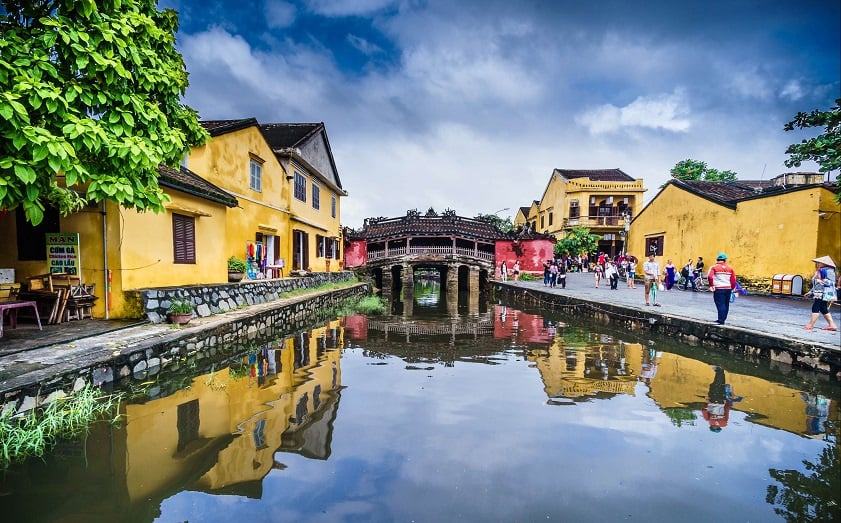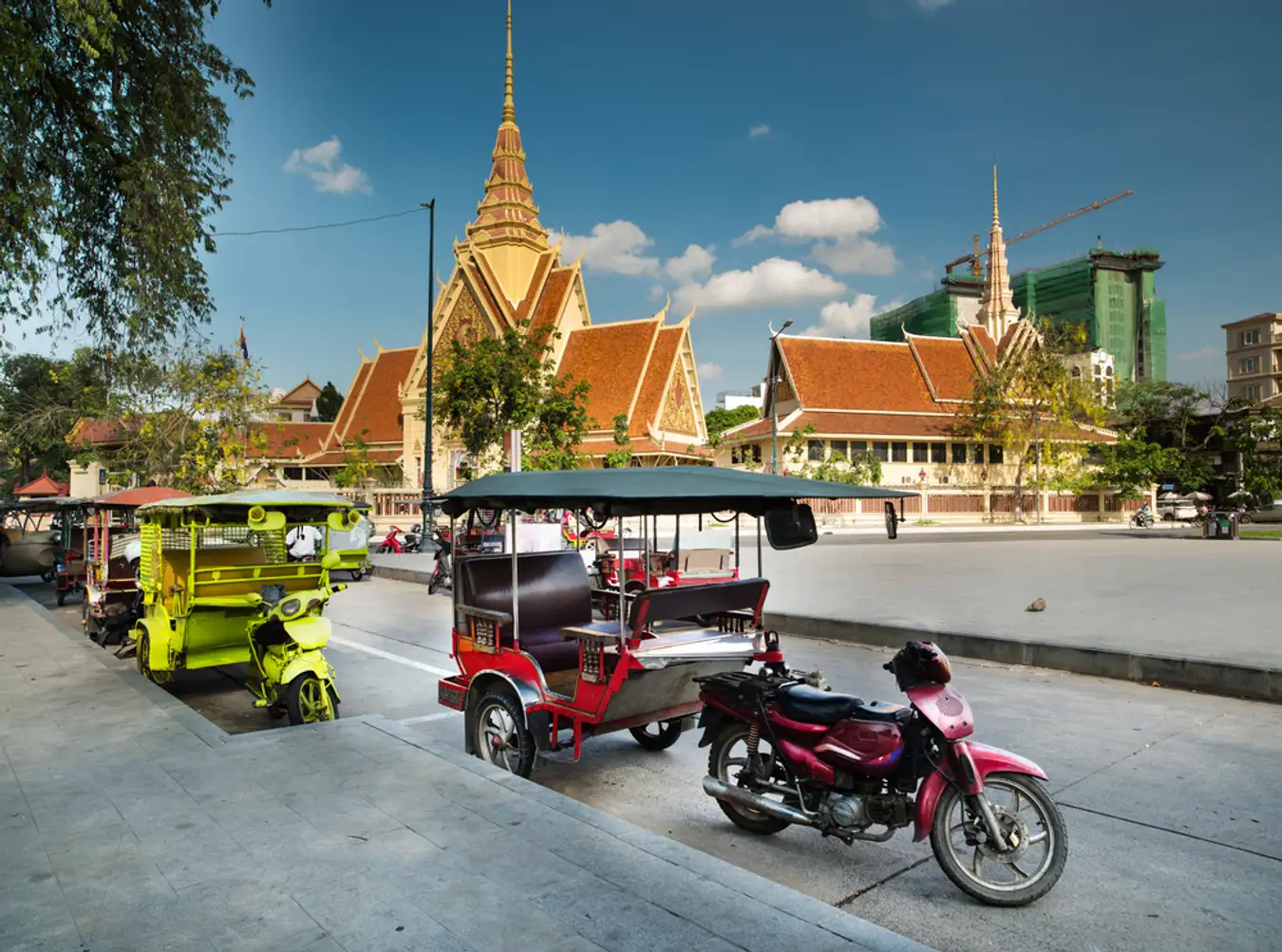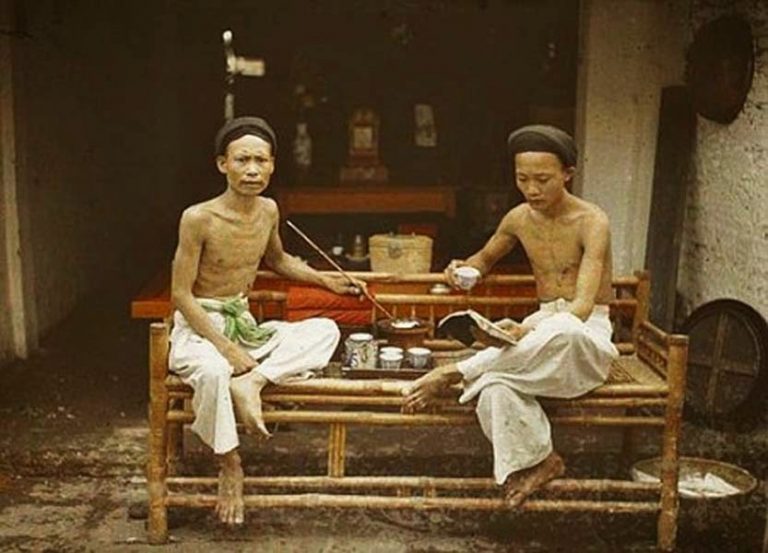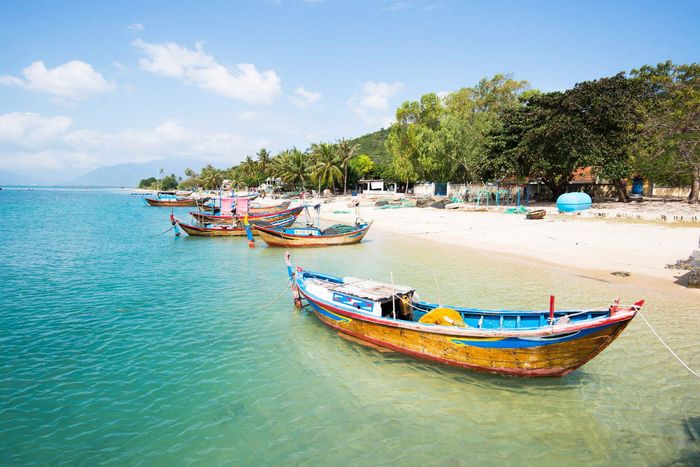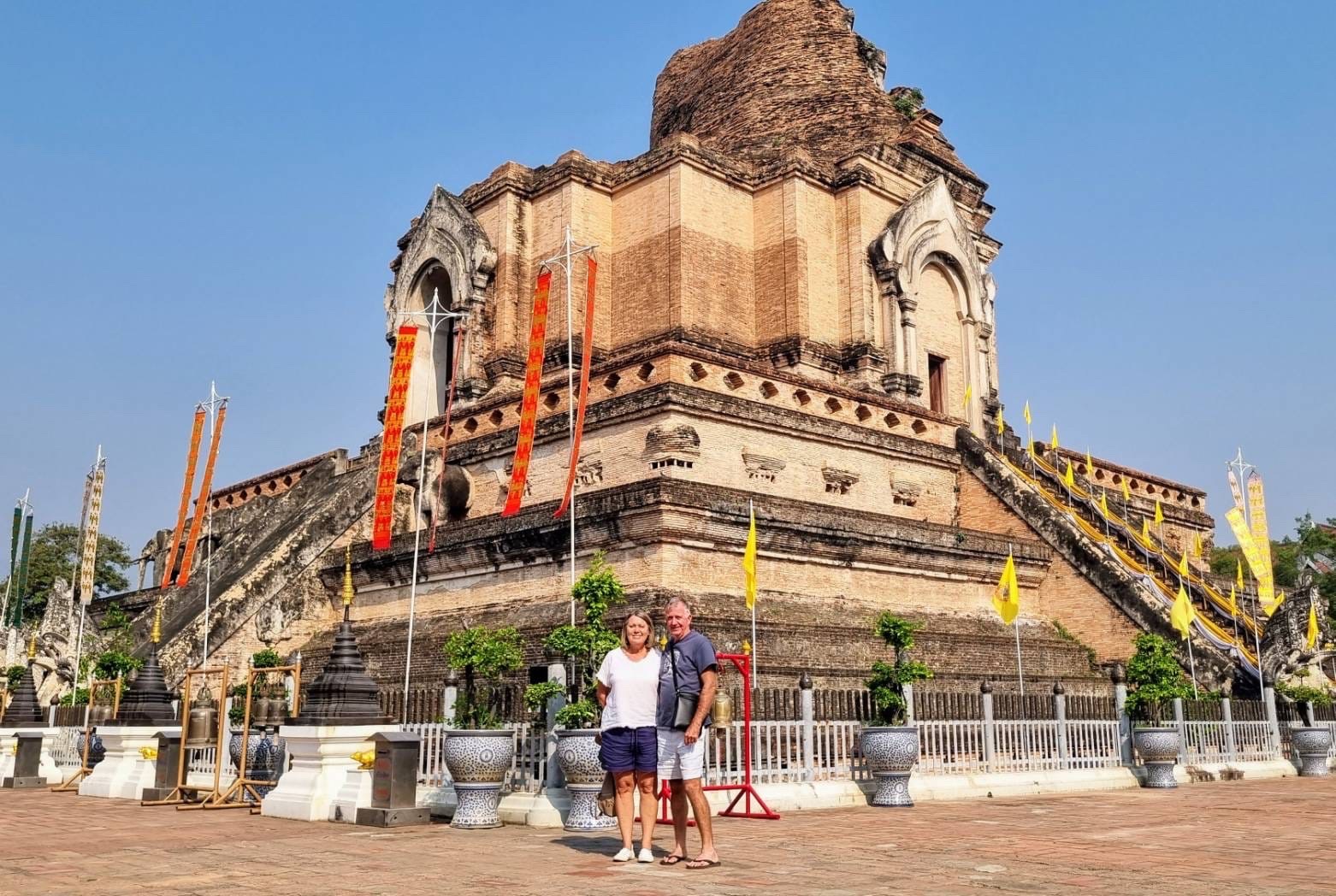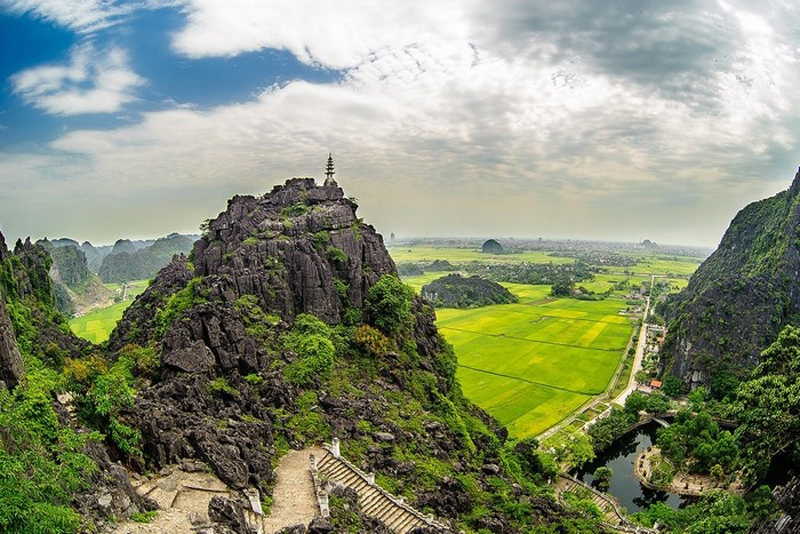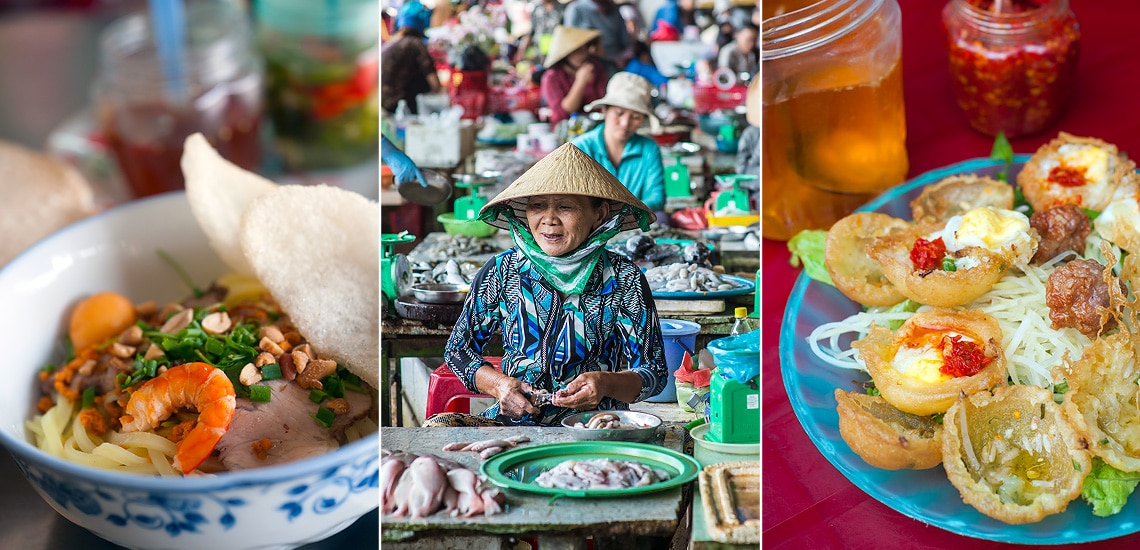The Japanese Bridge, sometimes called Chua Cau (Pagoda Bridge Hoi An Vietnam), is a landmark close to the Thu Bon River and represents the historic city of Hoi An. This temple’s ageless beauty and many distinctive historical and cultural tales astonish guests. What makes the Hoi An Japanese Pagoda unique, then? Let’s investigate using the Vietnam Tour 247 in the following post.
Introducing Hoi An Japanese Bridge
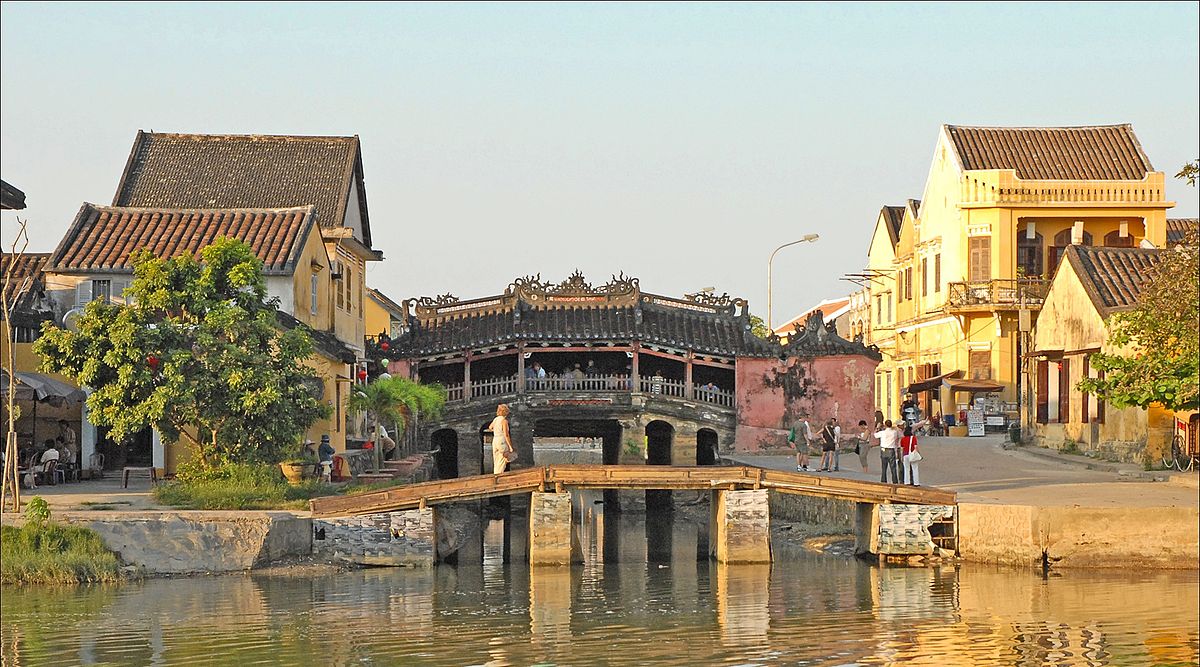
The Hoi An Japanese bridge (Japanese bridge Hoi An) is a work of cultural and historical significance that draws people in with its ageless beauty. Here’s the information you need to know about this bridge’s name and history.
The history of the formation
The Japanese community residing in Hoi An constructed the Japanese Bridge around the 17th century. Historical accounts state that during that period, inhabitants in this area frequently experienced flooding as a result of earthquakes. There is a legend that the bridge was constructed to resemble a massive sword piercing the back of the Namazu monster, keeping it from swinging its tail and unleashing havoc on the environment.
Throughout its history, the Japanese-covered bridge Hoi An Vietnam has undergone numerous repairs and restorations. During King Minh Mang’s reign, the bridge had its most extensive reconstruction in 1817. The Hoi An Japanese Bridge received national historical-cultural relic status in 1990. Additionally, the Japanese Bridge is one of the distinctive features of the ancient town, and Hoi An was designated as a World Cultural Heritage by UNESCO in 1999.
Japanese Bridge Hoi An Renovation
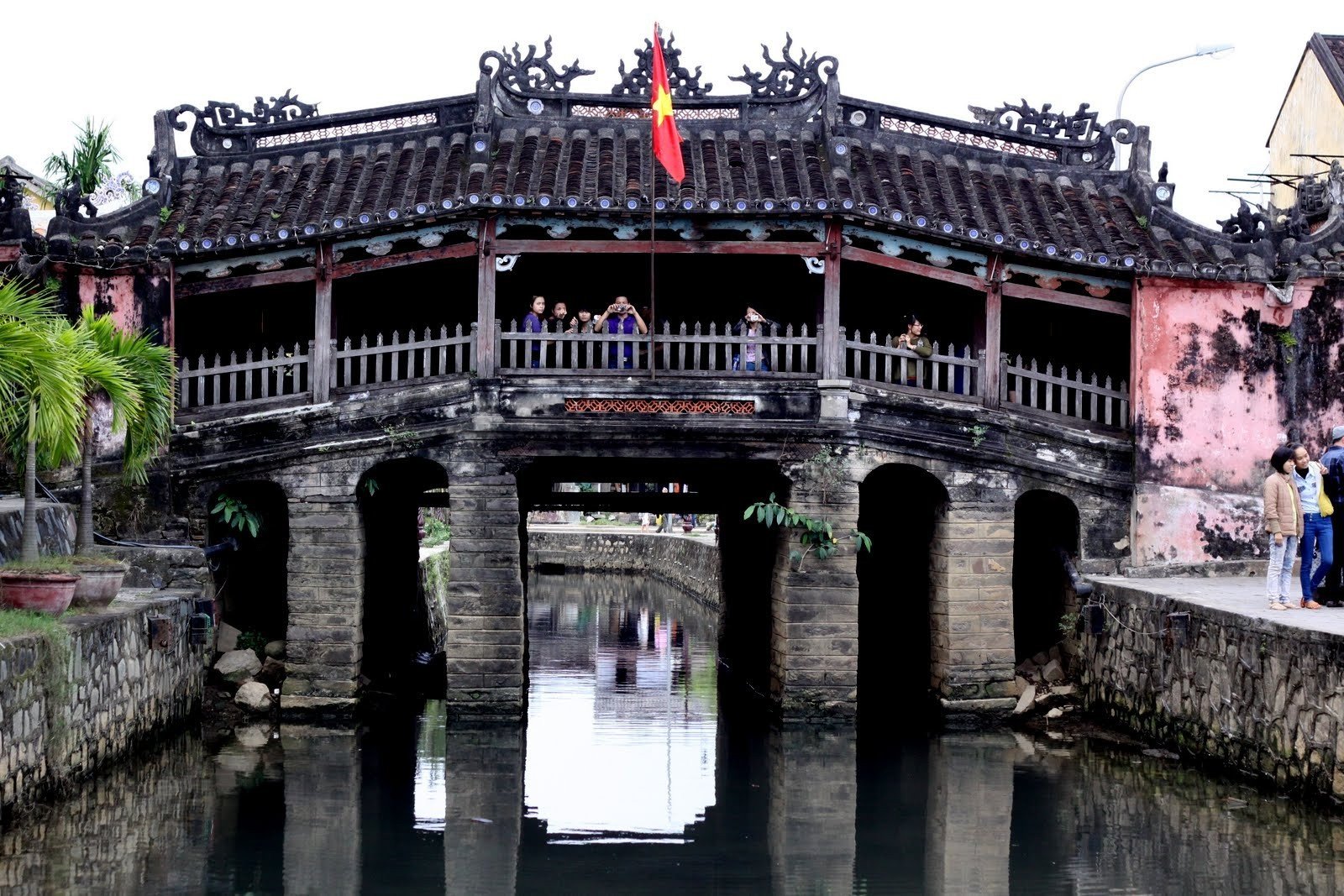
Over 400 years, the Hoi An Japanese Bridge has undergone seven reconstructions, most notably in 1763, 1815, 1875, 1917, 1962, 1986, and 1996. The floor, pillars, and roof have all undergone minor alterations.
The first three bridge improvements were credited to the village of Minh Huong Commune, which was located in Hoi An at the time. In 1917, the pedestrian-only bridge was transformed into a motorized vehicle bridge by the French during their colonial era. The Quang Nam provincial administration kept working on the Japanese Bridge’s repairs in 1962. In 1986, the bridge was refurbished to its original pedestrian-only layout. The two most recent renovations, which took place in 1986 and 1996, were thought to be the largest.
Since the latest refurbishment, the bridge has been reclassified because of multiple floods in Hoi An City. The deterioration of numerous poles and beams supporting the bridge highlights the need for immediate maintenance to prevent its collapse. As a result, the provincial government of Quang Nam authorized a project to save the bridge that would cost close to $1 million. The real construction, which aims to preserve the bridge’s existence, began in early 2020.
The meaning of the name
“Japanese Bridge” originates from the history of the bridge’s formation. Because the Japanese community contributed to its construction, the bridge bears the mark of Japanese architecture with a characteristic curved roof and sophisticated decorative motifs. However, in 1719, Lord Nguyen Phuc Chu visited Hoi An and named the bridge Lai Vien Kieu (Lai Viễn Kiều), meaning “Bridge to welcome guests from afar”.
In addition, the bridge is also called “Pagoda Bridge”. This name comes from confusion due to the structure of the bridge. The bridge has a curved roof and is decorated with many Buddha statues, causing many people to mistakenly think this is a temple.
Besides, the bridge is also known as Coc Bridge, Hoi Bridge, Truong Tien Bridge, Pho Lai Bridge, etc… Each name contributes to the unique identity of the Japanese Bridge, reflecting the unique history, culture and architecture of this bridge.
Architectural features of Hoi An Japanese Bridge
Hoi An Japanese Bridge is a unique project that draws tourists with its architectural impression of interference between China, Japan, and Vietnam. The architectural highlights of this bridge are listed below.
Overall architecture
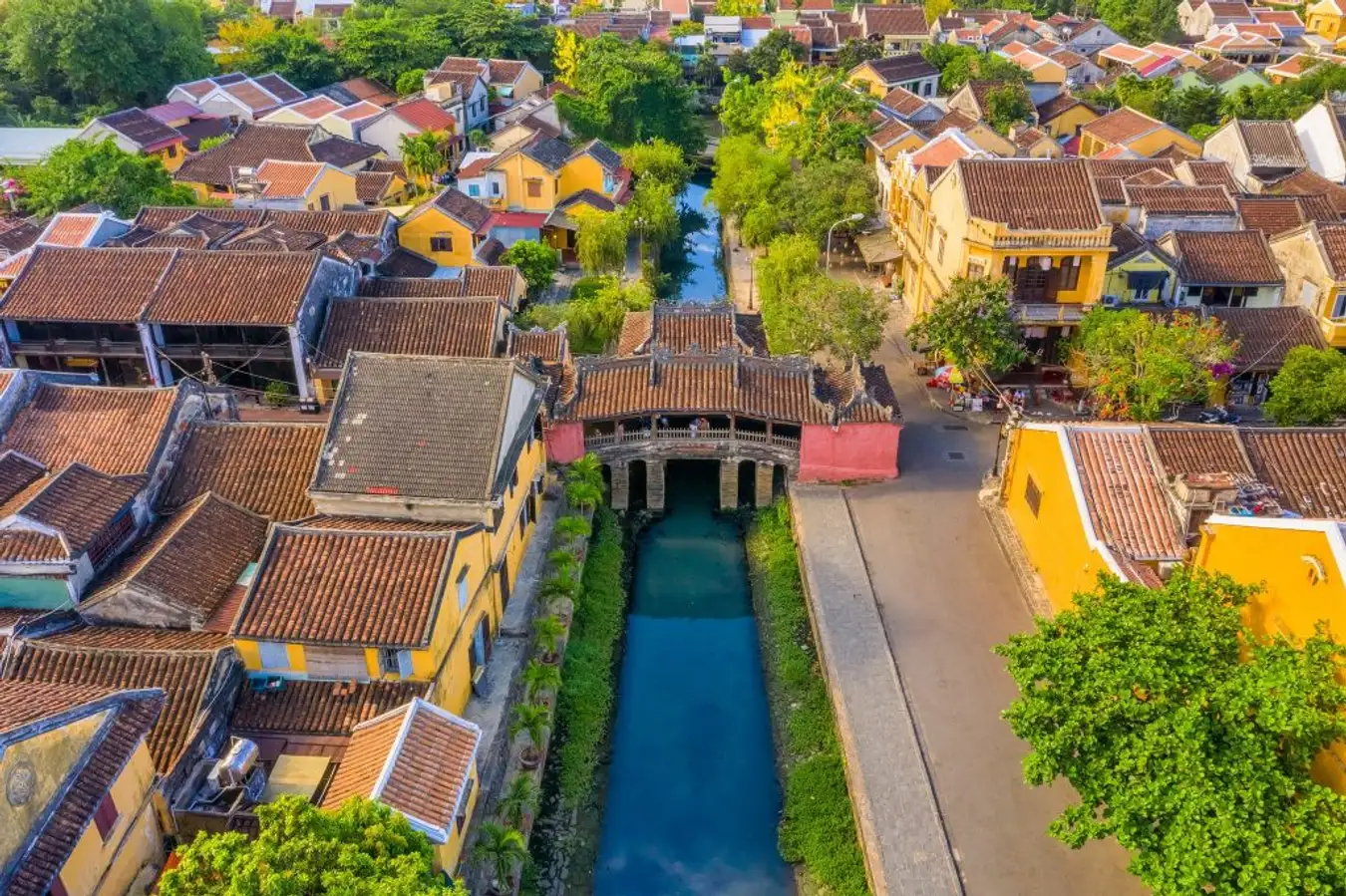
The overall architecture of the Hoi An Japanese bridge is quite unique. The bridge, which is roughly eighteen meters long, crosses a Hoai River branch, resulting in a picturesque and amorous scene. The house is located in the upper portion of the bridge’s structure, while the bridge is located in the lower part.
Sturdy and elegant, the bridge’s base is composed of massive stone pillars. The bridge’s canopy has a distinctive and alluring beauty due to its Japanese-inspired curvature and flexibility. The two mascot statues of Dog and Monkey, who stand for luck and fortune, are located on the roof of the bridge.
The highlight on the bridge is a large sign embossed with three Chinese characters “Lai Vien Kieu” – a warm and hospitable welcome to visitors from afar, expressing the spirit of openness and harmony with everyone. All of these architectural features combine to create a beautiful and meaningful Hoi An Japanese Bridge, a destination not to be missed when traveling to Hoi An.
Temple architecture
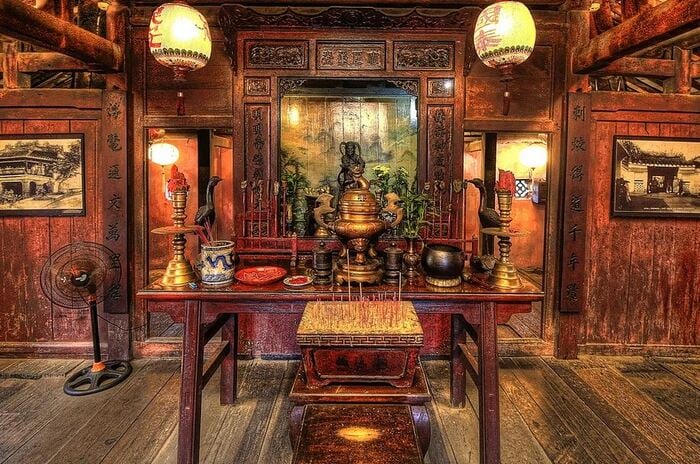
The temple has an old and distinctive appearance because it is made of wood and has a traditional Vietnamese house frame structure. The Hoai River is at the front of the property, making it a great place to take in the scenery and tranquility of the river.
Inside, the temple honors Quan Cong, a well-known folk deity, and Northern Emperor Tran Vo rather than Buddha as other temples do. The historic and spiritual beauty of Hoi An Japanese Bridge is enhanced by the statues of Loc Quy and Ky Lan on the roof, two feng shui symbols of luck and wealth.
Bridge architecture
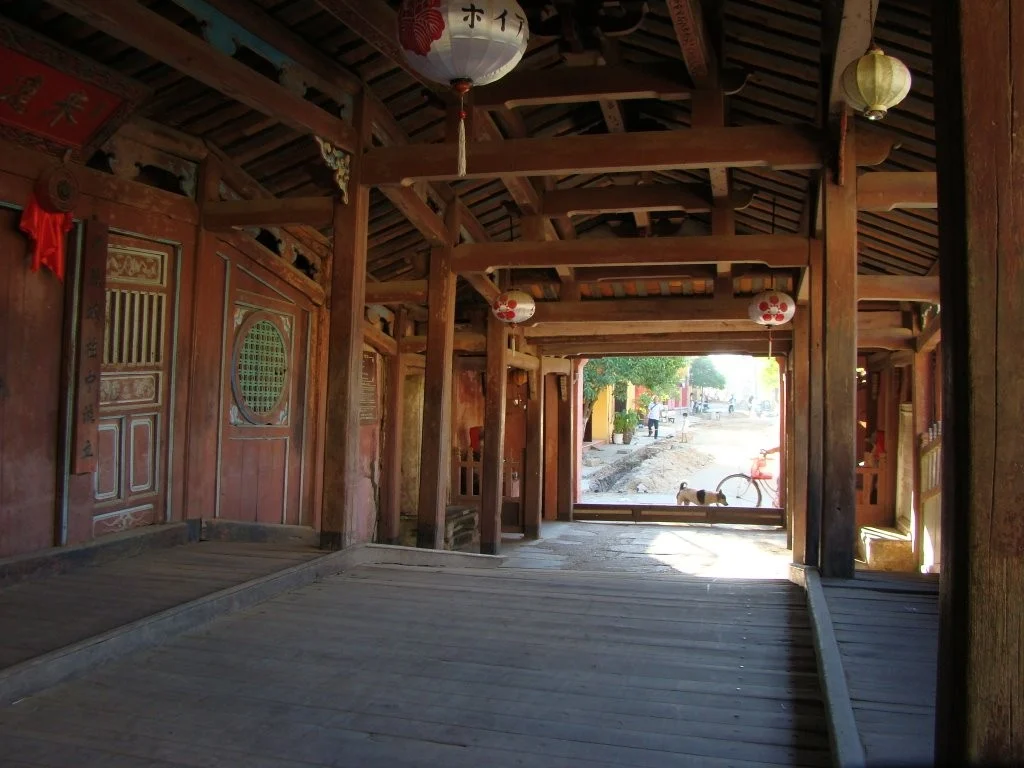
The bridge’s classic and distinctive beauty is created by its solid beam structure and wood construction. A straight passage for carriages to go back and forth crosses the middle of the bridge, highlighting its adaptability and usefulness for moving traffic and cargo. There are two little pedestrian walkways on either side of the bridge, which increases both the safety and convenience of crossing the bridge for locals and visitors. The intricately carved dragon and phoenix designs on the bridge railings create a stunning focal point that exemplifies the refinement and creative energy of the Hoi An people.
Historical and cultural value of Hoi An Japanese Bridge
Hoi An Japanese Bridge is a unique historical and cultural landmark in addition to being a stunning piece of architecture. The Japanese bridge, one of the oldest in Hoi An, was constructed in the 17th century, demonstrating its adaptability and resilience over time. The bridge, which still stands today and has evolved into a cultural icon that upholds the spirit and identity of heritage land, has seen numerous historical ups and downs, including the growth of Hoi An ancient town from a period of prosperity to a period of decline.
The bridge is not only the intersection of architecture and traditional art but also a clear demonstration of the prosperity and survival of historical and cultural heritage, clearly shown in the heart of Hoi An – a point of ideal culture and also a source of inspiration for tourists around the world.
The festivals are held at Hoi An Japanese Bridge
The Japanese Bridge is not only a significant historical and cultural landmark in Hoi An, but it is also the site of several unusual festivals that draw tourists from both local and international markets. Some common festivals are listed below:
- Festival of Light: Taking place during the Lunar New Year, the festival brings visitors a sparkling, magical space with thousands of lanterns decorated along the riverbank and on the Japanese bridge. Visitors can participate in activities such as releasing flower lanterns to pray for good luck, enjoying traditional arts, shopping for souvenirs, etc
- Lantern Festival: The festival is held on the full moon day of the 8th lunar month, and is one of the largest and most famous festivals of Hoi An. During the festival, Hoi An ancient town will be brightly decorated with colorful lanterns. Visitors will be able to participate in activities such as releasing flower lanterns on the Hoai River, watching lion dances, and singing adoration songs.
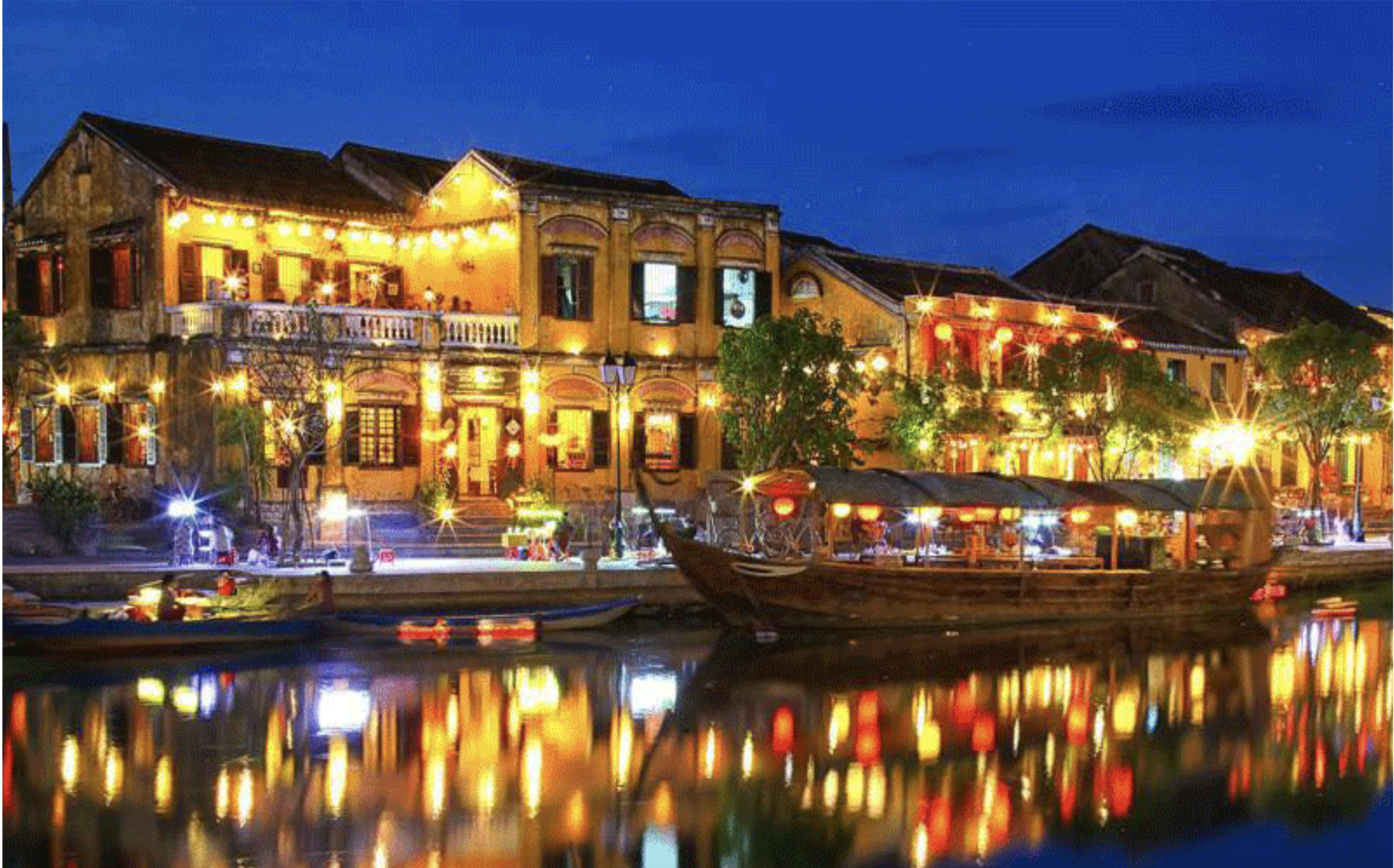
- Quang Nam Cultural Heritage Festival: The festival is held in the fourth lunar month, with many activities such as traditional art performances, cooking competitions, and displays of handicraft products.
How to get to Hoi An Japanese Bridge
Hoi An Japanese Bridge is located in the center of Hoi An Ancient Town, so visitors can easily get here by many different means:
- By plane: This is the fastest means of travel, only taking about 1 hour and 20 minutes. However, airfare prices are often higher than other means.
- By train: Travel time by train from Hanoi to Hoi An ranges from 15 to 20 hours. This is a suitable choice for travelers who want to save money or want to see beautiful scenery along the way.
- By bus: Many bus companies are operating the route from Hanoi to Hoi An with ticket prices ranging from 300,000 to 500,000 VND/person/trip. Travel time by bus is about 15 to 16 hours.
- By motorbike: If you want to freely explore along the way, you can travel to Hoi An by motorbike. However, you need to pay attention to traffic safety and health issues when riding a motorbike long distances.
What season is best to visit the Japanese Bridge?

The best season to visit Hoi An Japanese Bridge is from February to April. At this time, the weather in Hoi An is relatively cool, with little rain, convenient for sightseeing and traveling.
Furthermore, this is the time of year when several Hoi An customs are observed, including the Lantern Festival, the Quang Nam Cultural Heritage Festival, the Via Ba Thien Hau Festival, the Lunar New Year Festival, and the Cau Bong Festival. An. By taking part in these events, you will be able to get the most genuine taste of the local way of life.
Notes when visiting Hoi An Japanese Bridge
To have a complete experience when visiting the Japanese bridge, visitors need to note the following:
- Time to visit: Tourists should visit the Japanese Bridge in the early morning or evening to avoid the hot heat of the day. During Tet holidays or major festivals, visitors need to be aware of the large number of visitors and may have to wait a long time to take photos.
- Costume: You should wear polite, discreet clothing when visiting the Japanese bridge because this is a spiritual place. You should also bring hats, hats, and sunscreen if visiting during the day to avoid heat.
- Sightseeing ticket: In order to access the Japanese bridge, visitors must purchase sightseeing passes. The current cost of a ticket is 100,000 VND for foreign tourists and 80,000 VND for Vietnamese citizens. Additional sites in Hoi An ancient town, such as Tan Ky Ancient House, Hoi An Museum of History and Culture, and Phung Hung Ancient House, are included in sightseeing tickets.
- Code of conduct: Tourists should pay attention to maintaining general hygiene and not littering in the Japanese bridge area. In addition, it is also necessary to speak softly, not causing disorder and affecting those around you. Especially do not climb on the mascot statues on the bridge.
Conclusion
When visiting Hoi An, the Japanese Bridge, with its distinctive architecture and cultural influence, is a must-see. The bridge represents the Vietnamese people’s pride in addition to the old town. Visit the Japanese Bridge if you want to take advantage of this exceptional architectural location. To ensure that your time at this stunning and distinctive location is enjoyable and meaningful, don’t forget to abide by the standards of behavior and dress appropriately. I hope your trip to this Hoi An Bridge, a fantastic stop on your exploration of Hoi An, is beneficial and pleasurable.
Read more: Hoi An Lantern – Beauty Not To Be Missed When Visiting The Ancient Town

